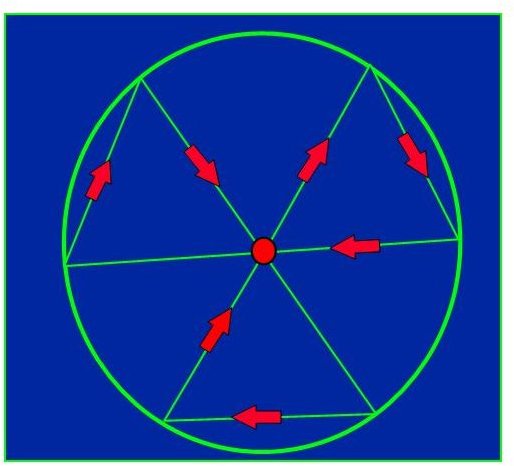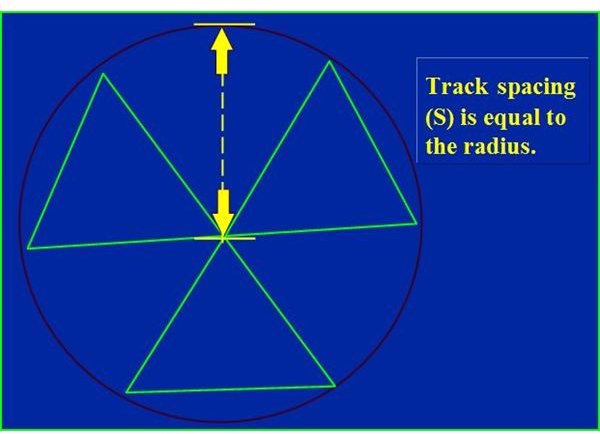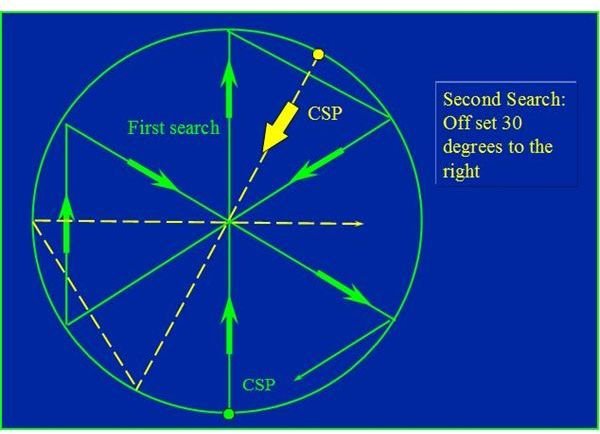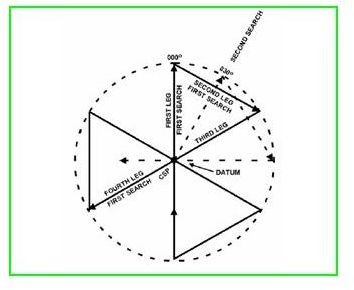Search and rescue patterns used on ships: What is sector type search pattern?
Search and rescue patterns
We learnt about the Track Line search and rescue pattern in our previous article and looked at its characteristic features. In this article we will focus our attention on yet another important search pattern namely Sector type search. But before we go ahead with that, I would like to define a few terms related to the emergency situations on board ship, relevant to search operations.
MAYDAY—used when in DISTRESS. This signal infers that the vessel or a person under a imminent or grave danger requires immediate attention or assistemce.
PAN PAN—used in URGENCY. This signal infers that the vessel or a person has a very urgent transmission regarding the safety of the vessel or the person.
SECURITE—used with regards to SAFETY. This signal is used to warn or transmit important safety messages with regards to weather,safety of navigation, meteorological conditions etc.
Radio Transmission Frequencies
There are 3 different types of radio frequencies used as follows
- 282.8 Mega Hertz Ultra High Frequency(UHF)
- 156.3 Mega Hertz Very High Frequency-Frequency Modulation(VHF-FM)—merchant ship & coast guard on scene SAR.
- 123.1 Mega Hertz Very High Frequency-Amplitude Modulation(VHF-AM)–International voice onscene SAR.
What are SITREPS?
These are Situation Reports, which have to be submitted when the details of the search and rescue case becomes clear and also every 4 hours during the search and rescue operation. The minimum information that should be available from the SITREPS are as follows:
1. SITREP number.
2. Situation
3. Action Taken
4. Future Plans
5. Amplifying Information
6. Case status.
So after SITREPS, the SAP is carried out. SAP is Search Action Plan, which is done in correspondence with SMC. The SAP is followed by initial source of search pattern and allocation of SRU’s.(Search & Rescue Units)
Sector Search Pattern
When a single SRU is involved in a sector type search pattern, the designated as “VS”. This type of search pattern is adopted when the search area is small, the location of the search object is well identified and when a deep concentrated search is required. This can be re-phrased, the sector type search pattern is used when
1. SRU has a good datum.
2. Used in restricted/small search areas.
3. The search object is small in size.
It resembles a spokes wheel with the datum being at the center. Also it is the only search pattern with the search area being circle. As the datum is established with a high degree of confidence, this method is employed where the search objects are difficult to search. The search units pass through the datum plenty times enabling to find out its location. During sector type search pattern, the SRU goes to the well known area where the search object is believed to be. This point is known as Datum (the center of the sector search). It is a practise to mark the datum with strobe light, life buoy, or an anchor buoy etc. The search usually starts with considering the direction of drift. If there is no drift, then first leg will be 000 degree true north, is considered as direction. The search starts with this course with the radius of the sector being one track spacing(S). The second leg will continue and the third leg will again meet at the datum to complete a sector of first search. The second search begins when the travel is from the datum to next complete sector. The distance between each search leg is 120 degrees and after 3 complete searches covering up the entire circle, the second sector formation starts by shifting the course 30 degrees from the datum. This again forms a sector to complete the sector type search pattern.



Thus we have seen the how to employ “Sector type serach pattern”..
Image credits:
1. U.S Department of Homeland Security
2. AUX OP review training power point presentation.
